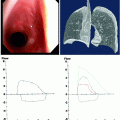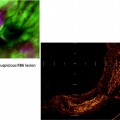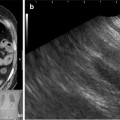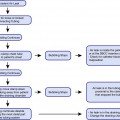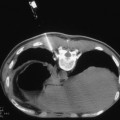Correction of hypoxemia unresponsive (refractory) to nasal oxygen
Reduced hematocrit
Reduced cor pulmonale
Decreased pulmonary vascular resistance
Improved room air A-aDO2
Reduced inspired minute volume
Decreased tidal volume
Decreased dead space volume
Improved or maintained PaCO2
Decreased work of breathing
Decreased Ti/Ttot
Improved exercise capacity
Reduced dyspnea
Reduced flow requirements during rest (55%) and exercise (30%)
Improved activity
Improved comfort and cosmesis
Improved physical, psychological, and social function
Improved duration of oxygen use (compliance)
Reduced days of hospitalization
O’Donohue evaluated room air arterial blood gases in patients that received nasal oxygen therapy during a control period, and room air arterial blood gases were repeated following administration of TTO. The room air alveolar-to-arterial oxygen tension gradient was significantly less after receiving transtracheal oxygen delivery. In addition, Hoffman and Bloom demonstrated that exercise capacity was significantly increased with TTO. Couser and Make showed that TTO decreases the inspired minute ventilation as a result of a reduction in tidal volume, and Bergofsky and Hurewitz documented reduced physiologic dead space with transtracheal gas delivery. In addition, PaCO2 was maintained or reduced over time. Benditt and Celli reported reduced oxygen cost of breathing and shortened respiratory duty cycle with TTO. Prior studies have demonstrated that a number of potential physiologic benefits of transtracheal gas delivery are directly related to air and/or oxygen flows in ranges up to 6–8 L/min. These potential benefits can be achieved within standard transtracheal oxygen flow rates.
Greater activity may also result from improved physical, psychological, and social function. Oxygen flow requirements with TTO are reduced by 55% at rest and approximately 30% during exercise. Consequently, portable oxygen delivery systems last longer, and patients can take advantage of smaller and lighter units. Activity may also be facilitated by improved exercise tolerance. Some patients have reported reduced dyspnea. Improvement in exercise capacity and dyspnea may result from the previously described reduced physiologic dead space, decreased inspired minute ventilatory requirements, and reduced oxygen cost of breathing.
True 24-h per day compliance can be achieved with TTO therapy. Most patients conclude that TTO is more comfortable than the nasal cannula. Consequently, they are more likely to use TTO continuously. The most common reason for patients to seek TTO was the need for improved comfort. Patients on nasal oxygen may have suboptimal compliance due to discomfort from chronic irritation around the nose and ears or from more significant complications such as contact dermatitis, chondritis, or skin ulceration. Though cosmesis is not a significant concern for many patients, some individuals may be more compliant with TTO due to improved self-image because the delivery device is entirely off the face and can easily be hidden from view.
Cost containment has become an increasing concern. Prolonged hospitalizations are much more costly than long-term oxygen therapy in the home. Compared to a nasal cannula control period, Hoffman showed that hospital days were significantly reduced with TTO. Bloom also demonstrated that hospital days for patients on TTO were significantly less than the hospital days during a period when they had received nasal oxygen. Likewise, the TTO group’s hospital days were lower than seen in a separate nasal cannula control population. The prospective randomized controlled study by Bloom also demonstrated improved physical, psychological, and social function with TTO.
Overview of the Program
The SCOOP Program is composed of four clinically defined phases of care:
Phase I: Patient Orientation, Evaluation, Selection, and Procedure Preparation
Phase II: Creation of The Tracheocutaneous fistula
Phase III: Transtracheal Oxygen with an Immature Tract
Phase IV: Transtracheal Oxygen with a Mature Tract
A specific goal in phase I is to define specific benefits that may be of value to the potential candidate. The potential benefits have been discussed. An additional important goal is to exclude individuals for whom TTO is contraindicated. The third task is to appropriately prepare the patient for the procedure while minimizing risk of complications.
The major goals of phase II are to create a quality tracheocutaneous tract and maintain stabilization of the patient. Phase III is focused on a smooth transition to a fully healed, mature tracheocutaneous fistula. The goal in phase IV is to ensure proficiency in catheter and tract self-care with ongoing collaborative care with the physician. The individual phases are the subject of greater discussion in this chapter.
A care team including the interventional pulmonologist as the team leader as well as trained respiratory therapists and nurses administers the TTO program. The surgeon is a key member of the team when the surgical method of tract creation is selected.
Overview of the Two Insertion Techniques
Both the MST and surgical technique developed by otolaryngologist Alan Lipkin, MD (Lipkin procedure) utilize the four phases of the SCOOP Program. Publications for further information regarding both insertion procedures and companion program modifications can be found in the “Suggested Reading” section. Phases I and IV are nearly identical for the two methods, but phases II and III differ based upon the requirements of the methods of creation of the tracheocutaneous fistula.
Though the short-term procedure-specific stents utilized in phase II differ in design, the long-term transtracheal oxygen catheter used in both phases III and IV is identical for both insertion techniques. Complications encountered with the two procedures will be presented. For the variety of reasons identified in this chapter, the author concludes that the Lipkin surgical approach is the method of choice.
Complications with the MST Procedure
The Kampelmacher study is representative of the complications encountered with MST. Results of this large series are illustrated in Table 68.2. An initial experience with 10 patients was compared to subsequent care with the next 65 subjects. Complications were minor. There was a substantial overall reduction in percent complications as the investigators gained experience. Subcutaneous emphysema (3%) was the only complication during the procedure and stent week (phase II). In general, during the immature and mature tract periods (phases III and IV), complications were reduced in frequency of occurrence with experience. However, assuming no patient had more than one event, the prevalence of complications was 34%. The most prevalent complications were keloids (11%), chondritis (3%), inadvertent dislodgement of the catheter with successful reinsertion by clinical staff (9%), and lost tracts that were not recovered (2%). In the 64 patients, they accounted for a complication incidence of 25% and comprised 74% of the total complications. In another two series, catheter dislodgement occurred more frequently at 38% and 44%, respectively. These issues were likely precipitated by inflammation of exposed cartilage during the MST procedure.
Table 68.2
Complications of transtracheal oxygen therapy with the modified Seldinger technique
Initial experience | Subsequent experience | |||
|---|---|---|---|---|
Patients (n = 10) | Frequency (%) | Patients (n = 65) | Frequency (%) | |
Complication | ||||
Procedure and stent week (phase II) | ||||
Subcutaneous emphysema | – | – | 2 | 3 |
Immature (phase III) and mature (phase IV) tract periods | ||||
Lost tracts | 6 | 60 | 1 | 2 |
Cricothyroid puncture | – | – | 1 | 2 |
Cephalad-displaced catheter | 7 | 70 | – | – |
Bacterial cellulitis | 1 | 10 | – | – |
Keloid | 4 | 40 | 8 | 11 |
Chondritis | 3 | 30 | 2 | 3 |
Inadvertent dislodgement | 5 | 50 | 7 | 9 |
Fractured catheter | 1 | 10 | – | – |
Tracheobronchitis | – | – | 1 | 2 |
Tracheitis | – | – | 1 | 2 |
A minor complication not identified in the Kampelmacher study was the formation of symptomatic mucus balls, which are accumulations of inspissated mucus on the outer aspect of the catheter tip. They generally occur during the 6–8 weeks when the tract is immature (phase III) during which time the patient cannot routinely remove the catheter for cleaning. Mucus balls cause cough and dyspnea, which resolve when the mucus is removed by the clinician. Reported incidence in three series was 14%, 25%, and 38%. As with any technology, outcomes can vary substantially among caregivers. A variety of factors such as team experience, modifications in the program of care, and the characteristics of the patients selected can all play a role.
Fatalities with the MST have been reported over the past 24 years. There have been rare case reports of one death and five life-threatening events due to airway obstruction from mucus balls. In addition, there has been one case report of death due to tracheal perforation and one report of death due to catheter misplacement.
Complications with the Lipkin Procedure
The surgical technique was initially designed for tract revision in the occasional patient with chronic problems encountered with the MST such as lost tracts, keloids, chondritis, and mucus balls. Kampelmacher utilized the Lipkin procedure to manage another set of 12 individuals from a patient base of an unspecified size with chronic tract problems related to the MST. These included major keloids (6), unrecovered tract closure (3), excessively prolonged tract maturation (1), tracheal chrondritis (1), and mispositioned supracricoidal tract (1). In addition, Kampelmacher selected the Lipkin surgical approach as the initial procedure in two patients with difficult anatomy due to obese neck and one individual with an ossified trachea. Of the 15, one patient had postoperative bleeding. Three had minor keloids excised, and all were doing well at 9 months follow-up.
Lipkin reported complications encountered in 33 consecutive patients who underwent the surgical technique as the initial procedure as compared to 64 consecutive individuals managed using the MST that were followed for a similar period. Chondritis occurred in 12% relative to 25% in MST cohort, and the incidence of symptomatic mucus balls was 15% compared to 44%, respectively. Of note, keloids, temporarily dislodged catheters, and lost tracts were not encountered, compared to 2%, 41%, and 14% in the MST group. No operative complications were experienced. No life-threatening complications or deaths have been reported in the literature since the procedure’s introduction in 1996.
The Lipkin Procedure and Related Program Phases
Phase I: Patient Orientation, Evaluation, Selection, and Preparation
As noted previously, a primary goal in this phase is to select the right patient. The general and specific indications are illustrated in Table 68.3. These recommendations have evolved through data drawn from scientific publications and extensive day-to-day clinical experience. Patients considering TTO should first meet well-established reimbursement criteria for continuous long-term oxygen therapy. These criteria are identified in Table 68.3. Patients only requiring supplemental oxygen during exercise or sleep do not qualify as TTO is intended for continuous use. TTO is specifically indicated for patients needing any of the physiologic benefits noted in Table 68.1. TTO is also indicated for patients who need improved activity and mobility to maintain health. TTO should be considered for patients experiencing complications or discomfort from nasal prongs that result in suboptimal compliance. Patients often remove the cannula if they experience chronic pain or discomfort over the ears or under the nose resulting from abrasion, maceration, ulceration, chondritis, or contact dermatitis.
Table 68.3
Indications for transtracheal oxygen therapy
General indications (continuous oxygen use) |
Resting PaO2 ≤55 mmHg or SpO2 ≤88% |
Resting PaO2 56–59 mmHg with any one of the following |
Dependent edema |
P pulmonale (electrocardiogram) |
Polycythemia (hematocrit <56%) |
Specific indications |
Need for potential physiologic benefits |
Complications of nasal cannula |
Suboptimal compliance with nasal cannula |
Need for greater mobility |
Patient preference |
Hypoxemia refractory to maximal nasal cannula delivery |
Nocturnal hypoxemia despite nasal cannula therapy |
Cor pulmonale or erythrocythemia on nasal cannula |
Hypoxemia that is refractory to maximal nasal cannula therapy is a specific indication for TTO. In addition to refractory hypoxemia, where patients have inadequate oxygen saturations both day and night, there are individuals on continuous oxygen therapy that selectively experience nocturnal hypoxemia on nasal prongs. A more subtle subset of patients on long-term oxygen therapy demonstrate adequate oxygen saturations on spot checks during periodic brief medical examinations but continue to experience cor pulmonale or erythrocytosis on nasal oxygen. These individuals may benefit from TTO as an alternative delivery system. Patient preference is extremely important; TTO should be considered when nasal prongs promote noncompliance due to cosmetic, discomfort, or impaired mobility issues.
Contraindications for TTO have been well established and are noted in Table 68.4. Individuals with severe anxiety neurosis tend to become more anxious when faced with the responsibility of catheter self-care. Patients with generalized poor compliance with medical therapy should not be considered. Those with severe mental incompetence or physical disabilities may not be able to adequately care for the catheter. The presence of a severe upper airway obstruction is also a contraindication. Barotrauma could potentially result since oxygen delivered into the distal trachea at a point below the obstruction may not be able to escape. Finally, the finding on a chest radiograph of herniation of pleura over the planned procedure site constitutes a contraindication because the procedure and subsequent catheter insertion may result in rare complications such as pneumothorax or pneumomediastinum. Patients should be medically stable at the time of the procedure. The procedure should be postponed in the presence of uncompensated (acute) respiratory acidosis until the patient is stabilized.
Table 68.4
Contraindications and precautions for transtracheal oxygen therapy
Contraindications |
Uncompensated (acute) respiratory acidosis |
Upper airway obstruction |
Medically unstable |
Pleura herniated over procedure site |
Severe anxiety neurosis |
Mental incompetence |
Physically unable to perform catheter care |
Poor compliance with medical therapy |
Severe uncorrected coagulopathy |
Precautions |
Poor mechanical reserve |
Hypoxemia refractory to nasal cannula |
Compensated (chronic) respiratory acidosis |
Difficult anatomic access |
Mild-to-moderate anxiety neurosis |
Uncontrolled bronchial hyperreactivity |
Copious or viscous sputum |
Serious cardiac arrhythmia |
Bleeding disorder |
Risk of delayed healing |
There are a number of patients that do very well with TTO, but one or more precautions (Table 68.4) are identified during their initial evaluation. It is not uncommon for patients on continuous oxygen therapy to have a poor mechanical reserve, profound hypoxemia, or hypercarbia without acidemia. Care must be taken to have these patients on maximal medical therapy and in stable condition prior to the elective procedure. Individuals with a serious cardiac arrhythmia, bleeding disorder, or anticoagulant therapy must be adequately prepared for the procedure and monitored carefully. In patients with an obese neck or other anatomic abnormalities, the Lipkin surgical approach for tract creation is usually necessary as opposed to the MST option.
Some individuals have an element of bronchial hyperreactivity associated with their chronic obstructive pulmonary disease (COPD). Preprocedure pharmacologic control of airway reactivity is important. The presence of copious or viscous sputum in patients with diseases such as cystic fibrosis and bronchiectasis should not necessarily preclude TTO as a treatment option. However, optimal control of bronchial infection and maintenance of adequate bronchial hygiene are essential in this preprocedure phase and throughout the entire program. Individuals with very copious or viscous sputum and those with uncontrolled bronchial hyperreactivity are particularly prone to encountering difficulty in phase III due to the development of symptomatic mucus balls. Unrelenting cough may also predispose marginally compensated patients to respiratory muscle fatigue. The presence of mild to moderate anxiety is not uncommon in patients struggling with severe chronic lung disease. Aggressive education and reassurance often help these individuals overcome their fears, and they usually do well with TTO. Increased confidence often comes with improved mobility and activity.
Stay updated, free articles. Join our Telegram channel

Full access? Get Clinical Tree


